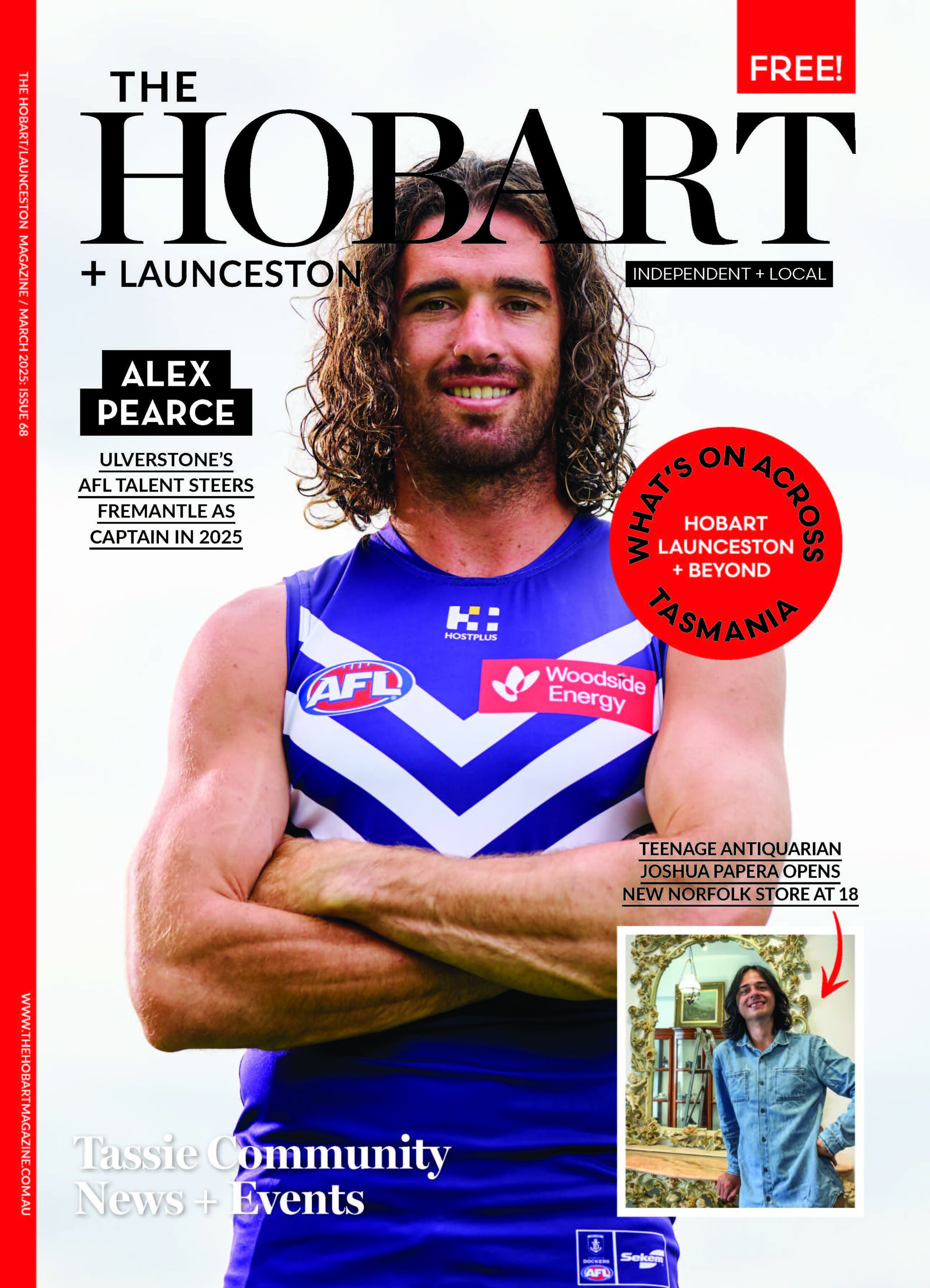The Tasmanian Art Deco & Modernism Project
by Lily Whiting

The Tasmanian Art Deco & Modernism Project is passing its 20 year milestone of record-keeping Hobart and broader Tasmanian modernist architecture. Photographer and documenter, Thomas Ryan has been looking up for a while now, and perhaps it’s time you did too.
What is The Tasmanian Art Deco & Modernism Project and how did it start? The project started in the early 2000s. I’ve always had an interest in the built environment since I was young and combining this with my interest in photography and history sparked the journey to document this period of design in Tasmania.
What’s your day job? I work full time as a professional commercial photographer and run my fine art photography practice.
What are the tell-tale signs of Art Deco and Modernist architecture in Tasmania? Modernism in Tasmania broadly represents the period of design, architecture, and culture from the 1930s to early 1980s. Influenced by overseas designs and architects, including new immigrants that came after the Second World War, many grand public buildings and infrastructure projects (Hydro buildings and dams) were designed in this period. Whilst the Art Deco movement focused on decoration and ornamental qualities such as on the CML building in Hobart with the use of terracotta tiles and gargoyles, the Modernist movement stripped decoration from buildings where the design principle was ‘form follows function’. Art deco looks like the Holyman House in Launceston and the former HEC offices in Hobart. Modernist examples include the State Library in Hobart from the 1960s with its glass curtain wall panels and of course the “Jaffa House” with its orange glass curtain wall panels in Hobart CBD. The latter part of the 20th Century witnessed design influences shift to experimenting with concrete and these include buildings such as the Lands Building and Don College in Hobart and Henty House in Launceston.
Are Tasmanian designs like others across Australia or do we have a signature style? I would argue that Tasmanian designs have a unique quality and attributes. New immigrants saw Australia with fresh eyes and brought their influences with them, as well as the experimentation with the use of local materials from Tasmania. The former Commonwealth Bank building in Hobart where pink granite adorned the building exterior was sourced from the East Coast of Tasmania while civic spaces were often embellished with public artworks by artists like the Civic Square in Launceston by Stephen Walker, and the large-scale mosaic tiles on the former Hobart ABC studio building by artist George Davis.
You share that housing and fashion are more similar than we realize. In a contemporary context are modernist elements being reintroduced into new builds? Art Deco and Modernism encompasses all elements of culture from the period, architecture was just one part of this movement. What was cutting edge then becomes out of fashion as new trends emerge. Today we see an appreciation and nostalgia for the 1980s and it wasn’t so long ago that convict history and the buildings of that time were shunned and/ or if seen as outdated. The use of timber in buildings is now popular again and younger generations now seek collector items at auction houses and online through dedicated websites and social media groups. I think people who are the custodians of Modernist buildings are seeking to sensitively update buildings to modern needs whilst retaining and celebrating the original essence and character of its original design.
Tasmania has the highest concentration of heritage sites of anywhere in Australia. Does this help or hinder the preservation of modernist architecture? While Tasmania is associated with a rich trove of heritage buildings there is a long way to go in terms of Modernist architecture being provided with the same protection and recognition that it deserves. We are losing buildings from this era at a rapid rate, as with past periods of history that were regarded as not important, and demolished. Modernism now faces many of these same historical issues and what we see today as history and heritage will change over time so it’s important to see heritage as more than just sandstone.
What is a standout building in your eyes? If I had to choose one it would be the now demolished 10 Murray Street, Hobart. The bold, geometric forms were a joy to capture. I produced a body of work spanning over a decade in documenting 10 Murray Street both externally and the interior. I became good friends with one of the original architects on the project and our correspondence about the building and the design process were invaluable and inspired my journey documenting the building. Follow Thomas at @tasmanianmodernism on Instagram.

